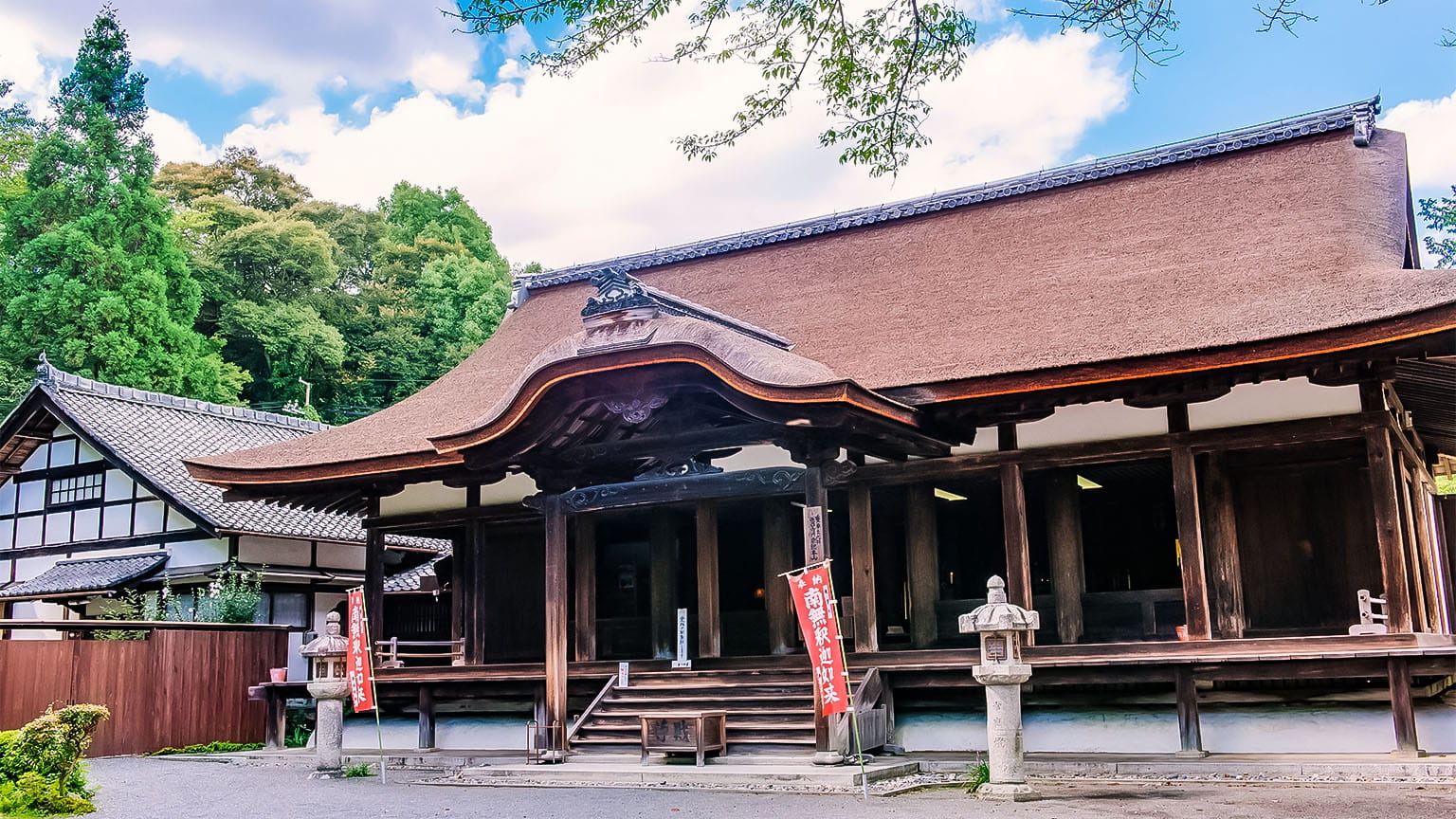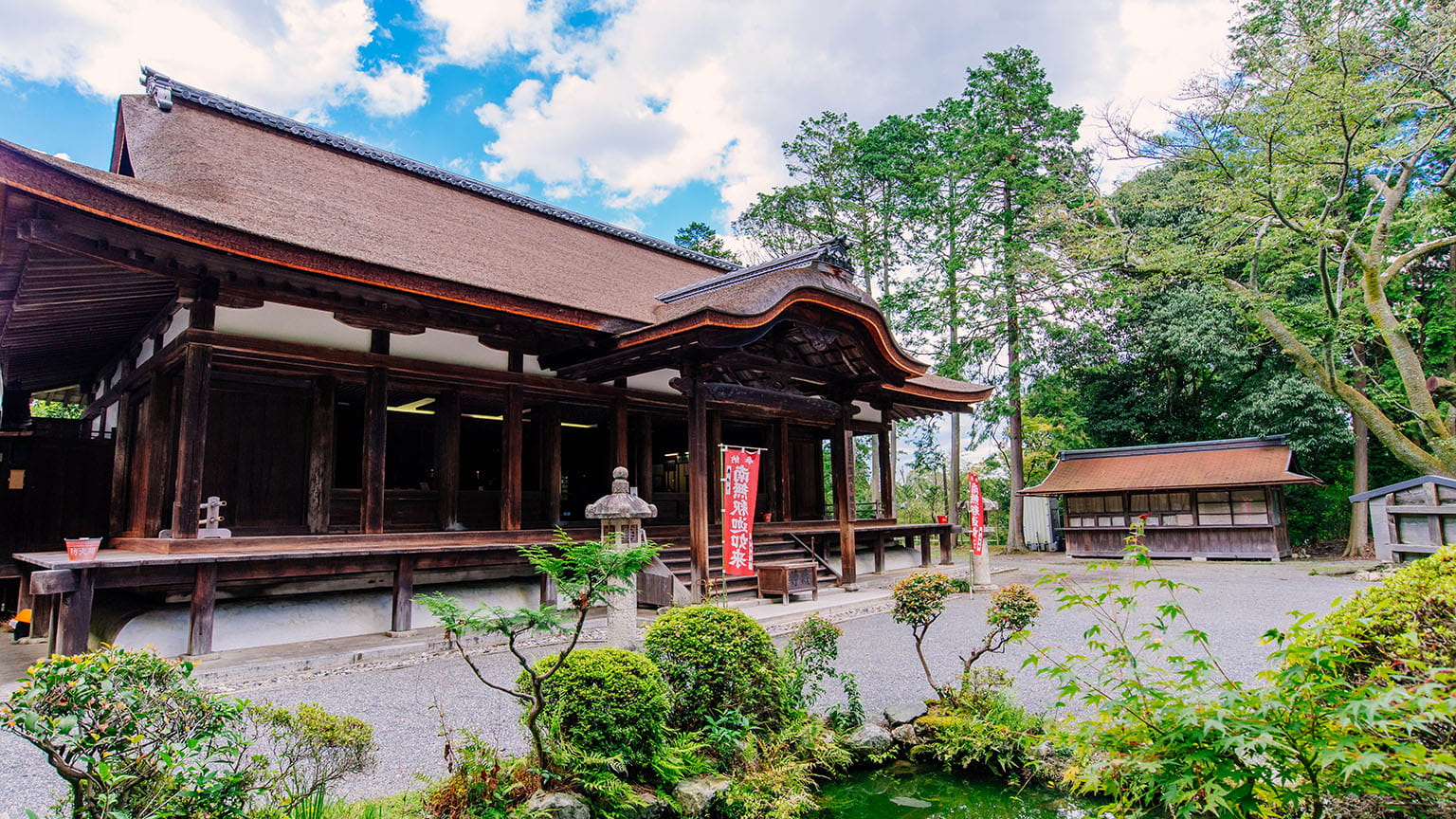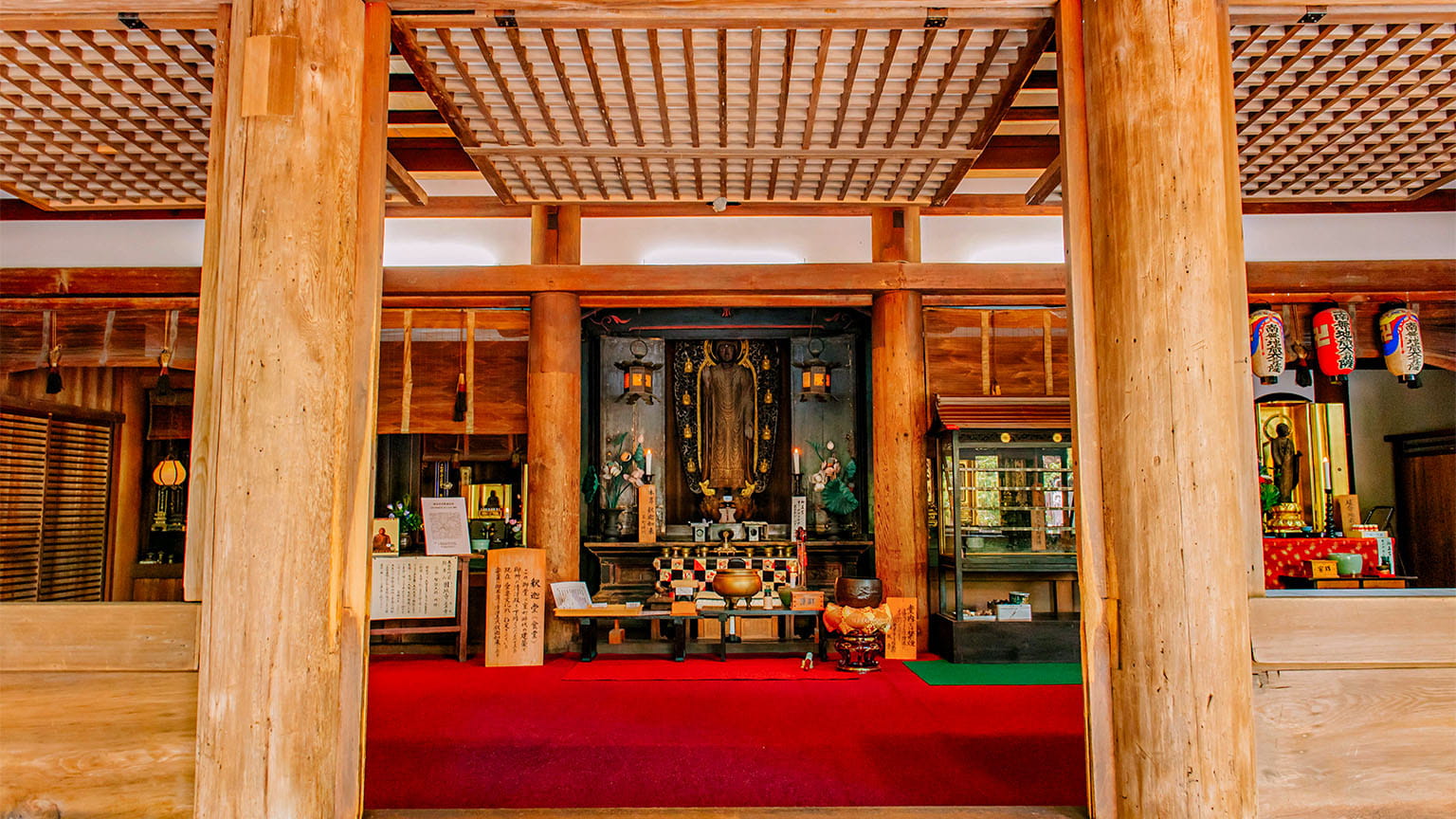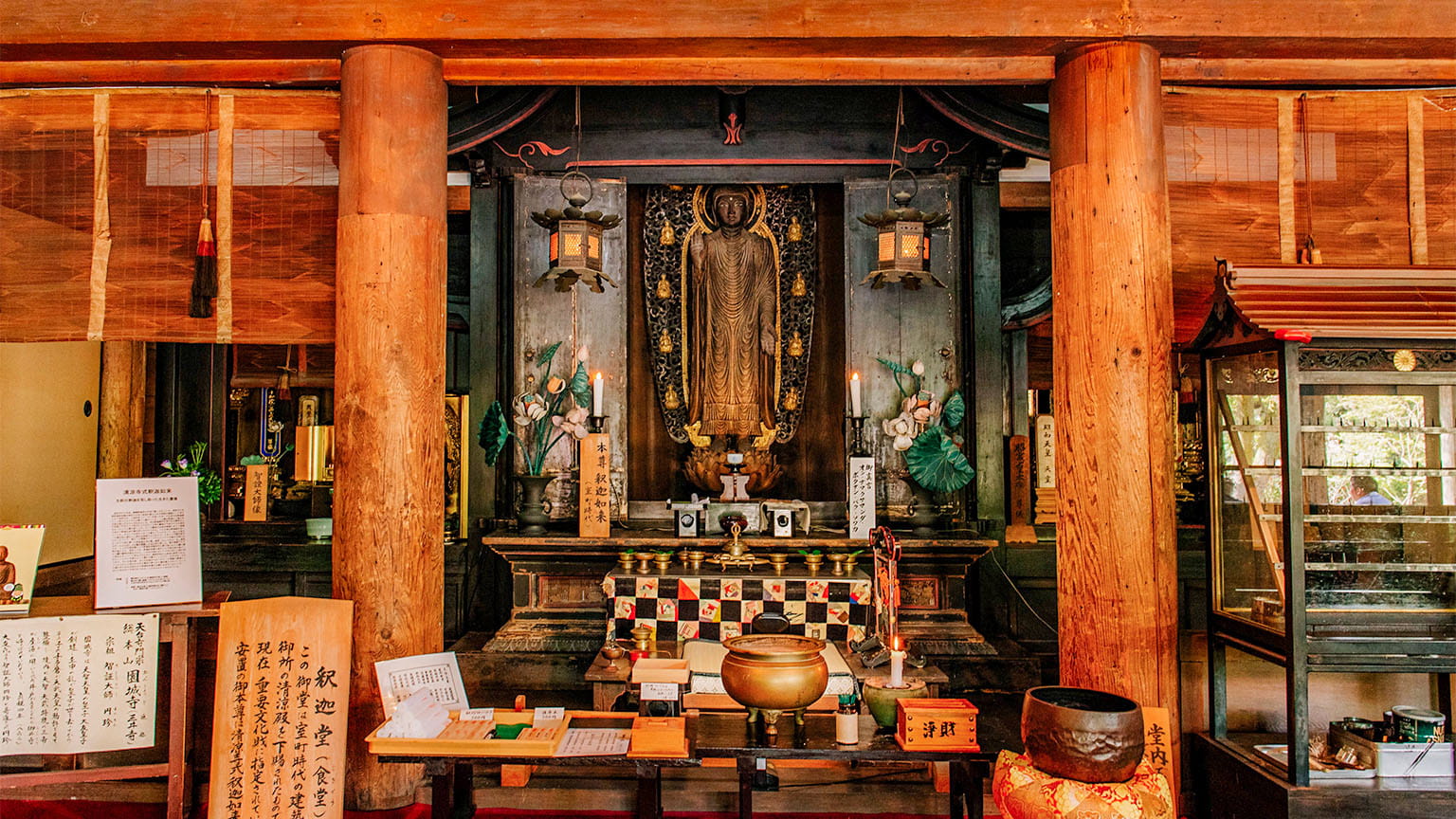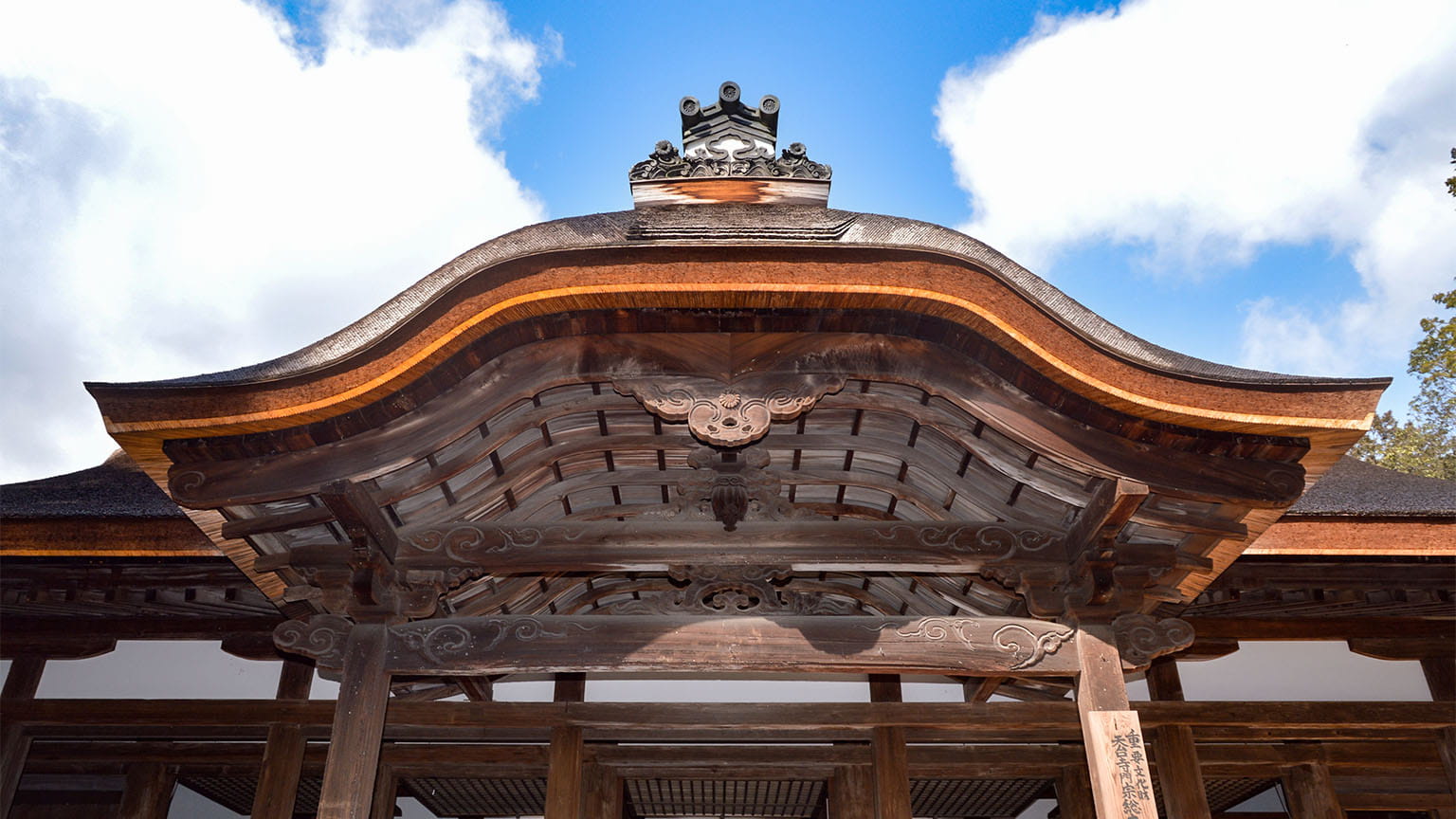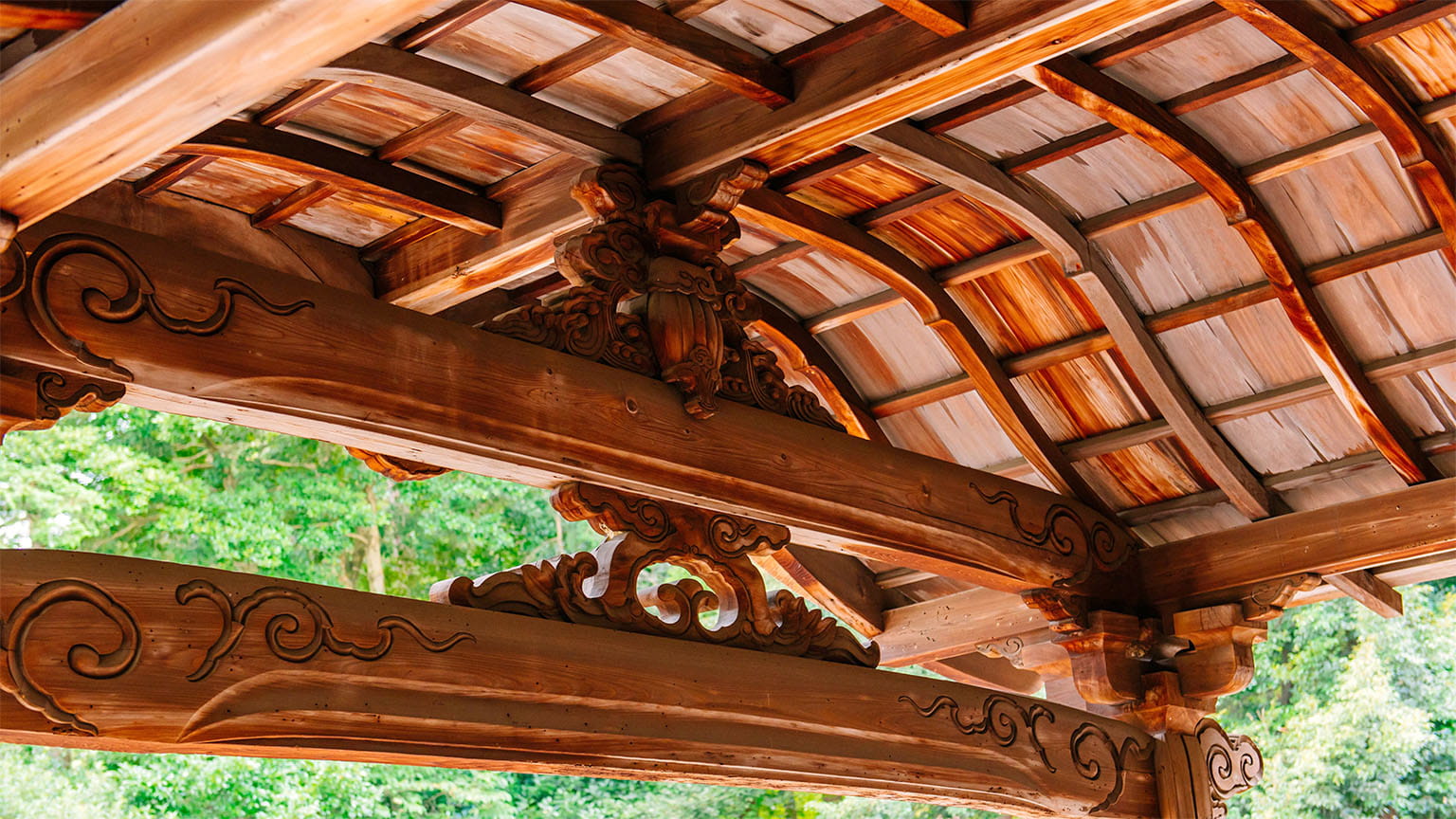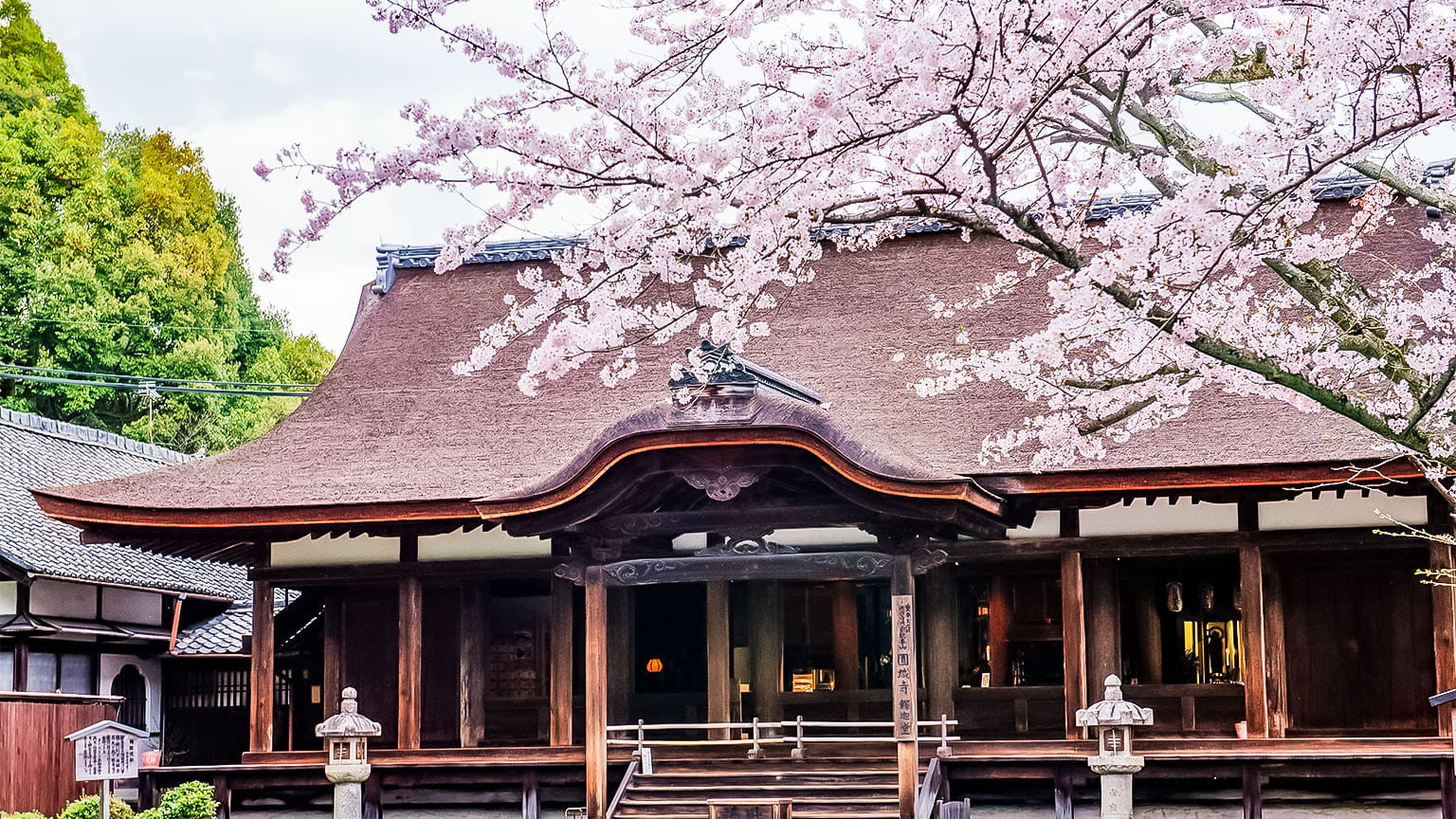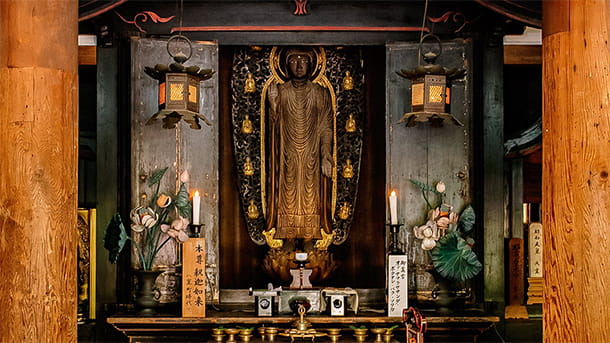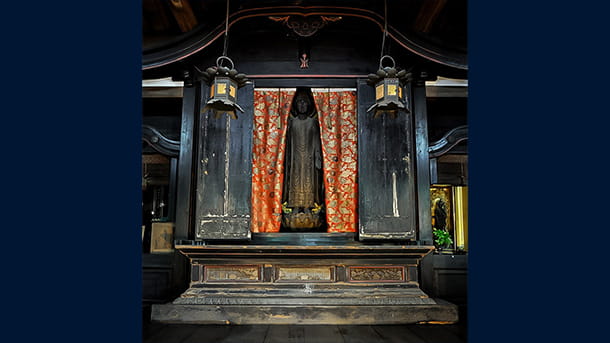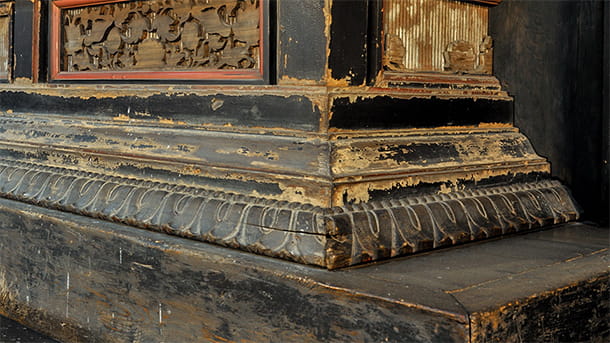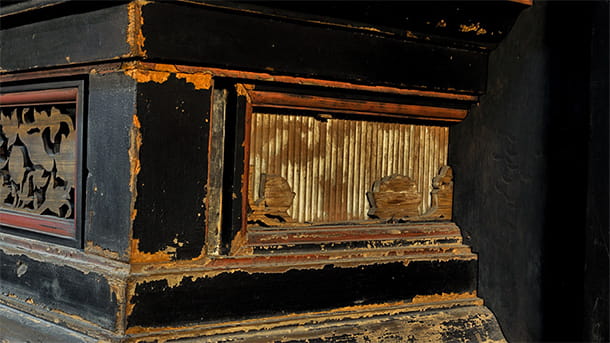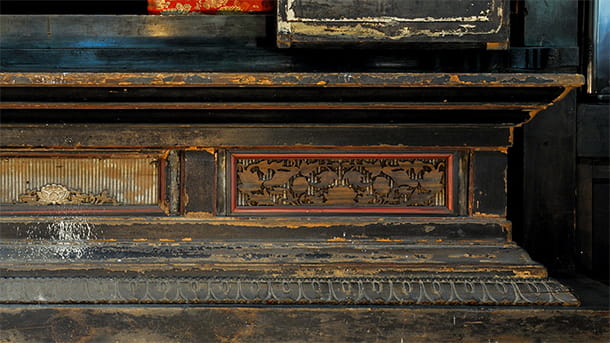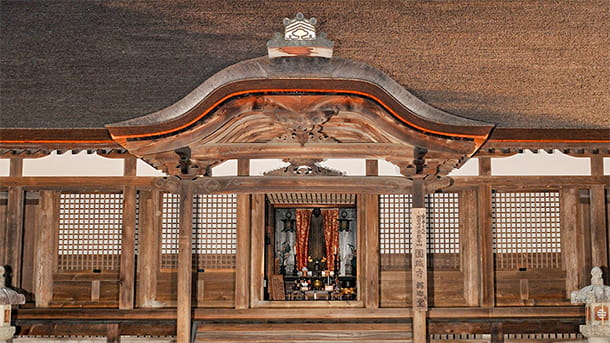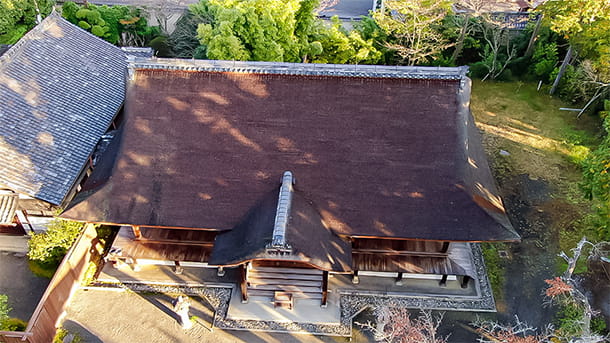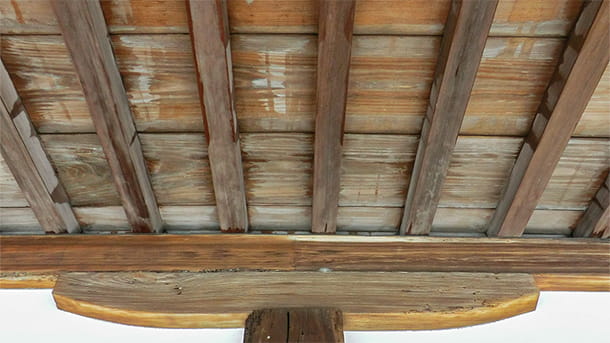Cultural Property of Japan
Jikido Dining Room (Shakado)
READER
This building, which is currently called the Shakado, enshrines a Seiryoji Temple-style statue of Shaka Nyorai (Gautama Buddha) as its principal image. The shumidan dais is from the Muromachi period (1336–1573) and has a decorative kurigata moldings and lotus petal carvings above and below the dais, as well as elaborate vine-patterned scrollwork in the central kozama panel. A sloping ‘pent’ roof with karahafu bargeboards was added to the building in 1830.
The Shakado is said to have been the Seiryoden pavilion at the Imperial Palace in Kyoto that was later moved to Miidera. It is a simple residential-style structure with hanshige-daruki rafters and cypress bark roofing. Its current appearance gives the viewer an impression of what an old-style dining hall at a large temple in medieval Japan may have looked like.
- −
- Muromachi Period
Please rate this cultural heritage introduction page.
-
-
Satisfaction
-
-
Understanding
-
-
Recommendation
-
-
Attractiveness
-


